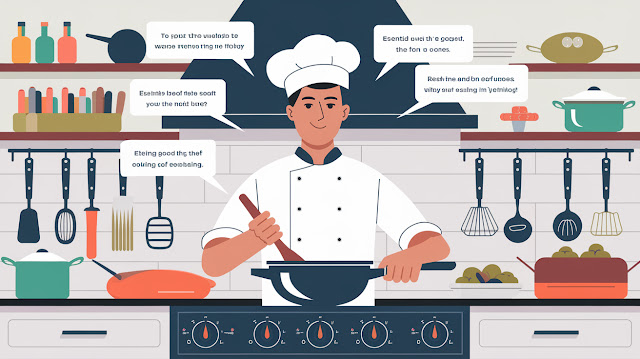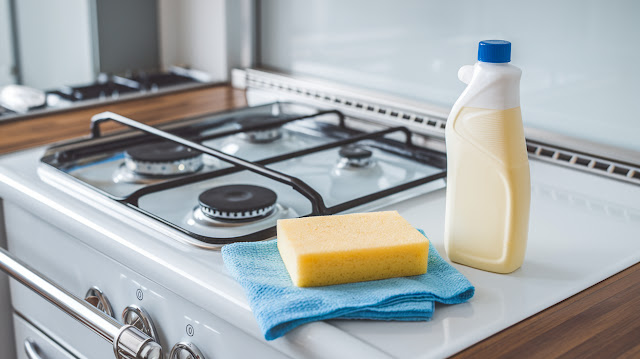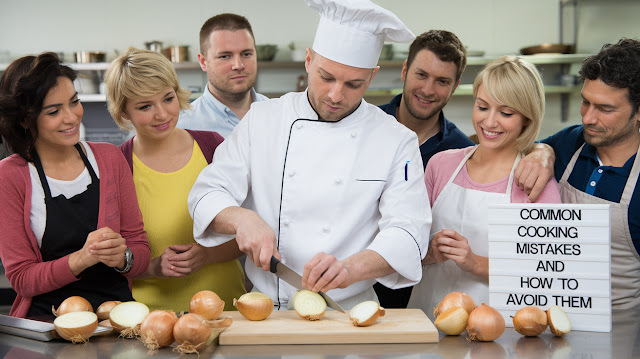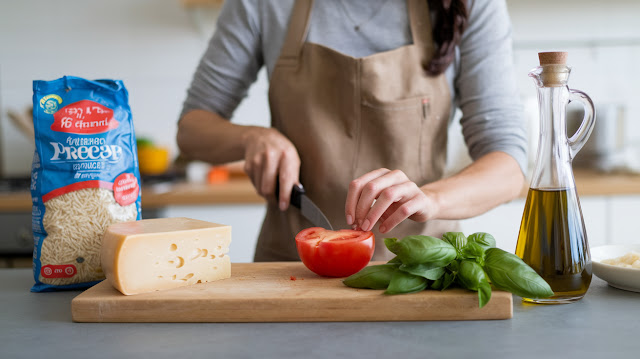Intro
Cooking can feel overwhelming when you’re just starting, but having the right knowledge about cooking can make the process much easier. Whether you’re using a gas stove, an electric cooker, or a pressure cookwithcooker understanding the basics can help you prepare delicious meals with confidence. This guide will cover essential cooker tips for beginners, from safety measures to cooking techniques and maintenance hacks.
 |
| Image 1- Smart Cooking Starts Here! Essential Cooker Tips for New Cooks. |
1. Understanding Different Types of Cookers
Before diving into cooking, it's important to know the different types of cookers available and their unique advantages.
Gas Cookers
Gas stoves provide instant heat and precise temperature control, making them a favorite among professional chefs. They are ideal for frying, sautéing, and stir-frying. However, they require proper ventilation and regular cleaning to prevent gas buildup.
Electric Cookers
Electric stoves take longer to heat up but offer a steady and even distribution of heat. They are excellent for slow cooking and simmering but can be less responsive when adjusting heat levels.
Induction Cookers
Induction cookers use electromagnetic energy to heat cookware directly, making them faster and more energy-efficient. They are safe to use since they don’t produce an open flame, but they require induction-compatible cookware.
Pressure Cookers
Pressure cookers speed up the cooking process by using steam pressure. They are great for tenderizing meats and cooking grains and legumes quickly. However, they require careful handling to prevent accidents.
2. Essential Safety Tips for Using a Cooker
-
Read the manual: Each cooker has unique safety features and usage instructions, so always read the manual before using it.
-
Check for leaks: If using a gas stove, ensure there are no gas leaks by smelling for gas or applying soapy water to the connections.
-
Use the right cookware: Induction stoves require magnetic-bottomed pots, while pressure cookers need properly fitting lids.
-
Keep a fire extinguisher handy: Fires can happen unexpectedly, so always be prepared.
-
Turn off appliances: Always turn off the stove or cooker after use to prevent hazards.
-
Use protective gear: Oven mitts and pot holders protect your hands from burns.
3. Cooking Techniques for Beginners
Mastering basic cooking techniques will make your meals tastier and more enjoyable.
Boiling
Boiling is a simple method that involves cooking food in hot water. It is commonly used for pasta, rice, and vegetables. To prevent overcooking, always follow the recommended cooking times.
Sautéing
Sautéing involves cooking food in a small amount of oil over medium-high heat. This technique is ideal for preparing vegetables and proteins quickly while preserving their flavors.
Steaming
Steaming is a healthy cooking method that retains nutrients in food. You can steam vegetables, fish, and dumplings using a steamer basket or an electric steamer.
Simmering
Simmering is a gentle cooking technique that allows flavors to develop slowly. It is perfect for making soups, stews, and sauces.
Pressure Cooking
This method speeds up cooking time while preserving nutrients. When using a pressure cooker, make sure to release steam safely before opening the lid.
4. Maintenance and Cleaning Tips for Cookers
Cleaning Gas Stoves
-
Wipe the burners with a damp cloth after each use.
-
Remove grates and wash them with warm, soapy water.
-
Use a toothpick to clean clogged burner holes.
Cleaning Electric Cookers
-
Let the surface cool before cleaning.
-
Use a mild cleaner and a soft sponge to wipe the surface.
-
Avoid using abrasive scrubbers that can damage the heating elements.
Cleaning Induction Cookers
-
Use a microfiber cloth to clean spills immediately.
-
Avoid placing heavy objects on the glass surface to prevent cracks.
Cleaning Pressure Cookers
-
Wash the gasket and lid after each use to remove food residues.
-
Ensure the pressure valve is free from blockages.
-
Store the cooker with the lid slightly open to prevent odors.
5. Common Cooking Mistakes and How to Avoid Them
Overcrowding the Pan
Adding too much food at once can lower the pan’s temperature, leading to uneven cooking. Always leave some space for proper heat circulation.
Not Preheating the Cooker
Preheating is essential for achieving the right texture and flavor. Whether you're using a gas, electric, or induction cooker, give it a few minutes to heat up before adding ingredients.
Ignoring Measuring Tools
Cooking requires precision, especially when baking. Use measuring cups and spoons to get accurate ingredient proportions.
Using the Wrong Cookware
Certain materials work best with specific cookers. For example, avoid using aluminum cookware on induction stoves since they won’t heat properly.
Lifting the Lid Too Often
Frequently opening the lid of a pot or pressure cooker can release steam and affect cooking time. Try to keep the lid closed unless necessary.
6. Energy-Efficient Cooking Tips
Saving energy while cooking is not only cost-effective but also environmentally friendly.
-
Use the right burner size: Match your pot size with the burner to reduce heat loss.
-
Cover pots with lids: Lids trap heat and help food cook faster.
-
Cook in batches: Preparing multiple meals at once saves time and energy.
-
Turn off the heat early: Residual heat can finish cooking some foods, like pasta or eggs.
-
Use pressure cookers: They reduce cooking time and energy consumption.
7. Quick and Easy Recipes for Beginners
1. One-Pot Pasta
Ingredients:
-
200g pasta
-
2 cups water
-
1 cup diced tomatoes
-
½ cup chopped onions
-
2 cloves garlic, minced
-
1 tsp olive oil
-
Salt and pepper to taste
Instructions:
-
Add all ingredients to a pot and bring to a boil.
-
Reduce heat and simmer for 10-12 minutes, stirring occasionally.
-
Serve hot with grated cheese.
2. Quick Stir-Fry Vegetables
Ingredients:
-
1 cup bell peppers, sliced
-
1 cup broccoli florets
-
½ cup carrots, julienned
-
2 tbsp soy sauce
-
1 tbsp olive oil
-
1 clove garlic, minced
Instructions:
-
Heat oil in a pan over medium-high heat.
-
Add garlic and sauté for 30 seconds.
-
Add vegetables and stir-fry for 5 minutes.
-
Add soy sauce and mix well.
-
Serve as a side dish or over rice.
Final Thoughts
Cooking as a beginner can be challenging, but with the right cooker tips and techniques, you can quickly build confidence in the kitchen. From understanding different cookers to learning essential safety, cooking, and maintenance tips, this guide provides everything you need to get started. Experiment with simple recipes, avoid common mistakes, and enjoy the process of learning how to cook delicious meals at home!












0 Comments